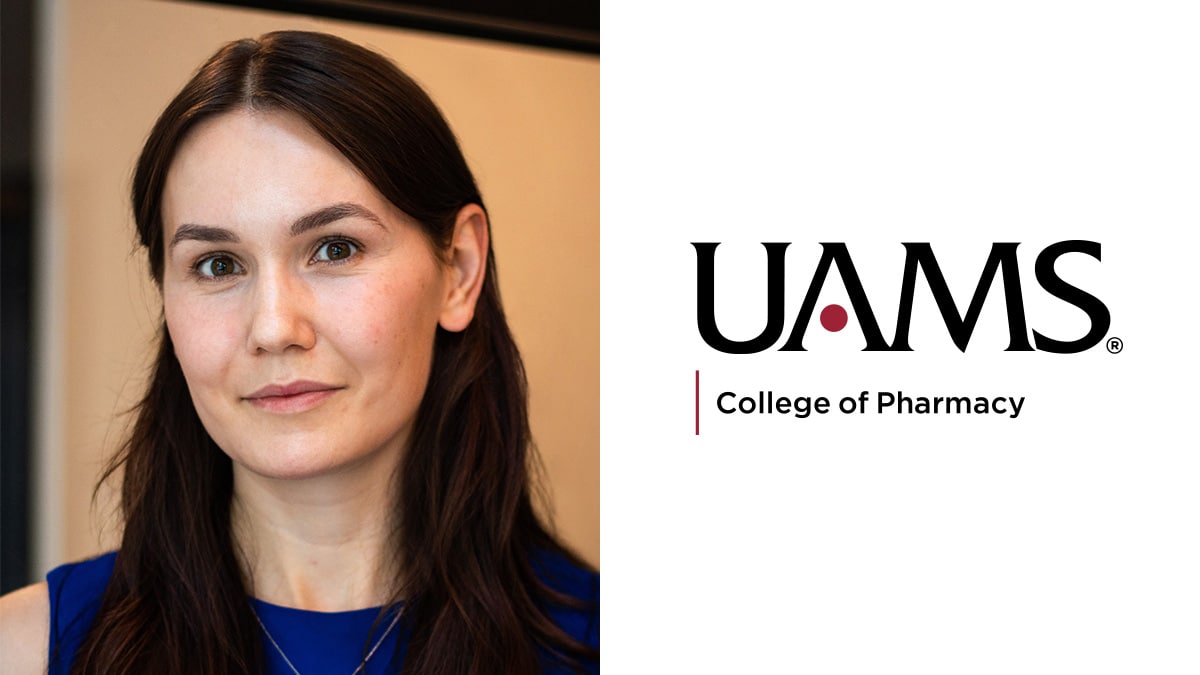View Larger Image

Laura Gressler, Ph.D., is first author on the JAMA publication.
JAMA Health Forum Publishes UAMS Researcher’s Novel Model for Ranking Biomedical Research Priorities
| LITTLE ROCK — In a new study led by UAMS’ Laura Gressler, Ph.D., researchers presented a novel model to help research funding agencies and groups prioritize their funding for various health conditions.
The study was published in the Journal of the American Medical Association (JAMA) Health Forum and included co-authors from the U.S. Department of Health and Human Services and U.S. Food and Drug Administration.
“It’s really exciting,” said Gressler, whose current work is supported by the UAMS Translational Research Institute. “This is the culmination of more than three years of very hard work with many collaborators and stakeholders, and I hope that a model like this can be used in the future to help inform funding decisions.”
For Gressler, an assistant professor in the College of Pharmacy Division of Pharmaceutical Evaluation and Policy, it was her second JAMA publication as first author and third as a co-author.
The team’s paper, “Data-Driven Model Identifies Gaps in Biomedical Innovation: A Proof-of-Concept Study,” ranks 13 common health conditions based on each condition’s health care burden, cost and biomedical product innovation.
Typically, Gressler said, federal agencies, industry leaders and stakeholders who fund research will consider only one aspect of the condition such as public health burden or cost alone when determining how to prioritize research funding support.
“We argue that it should be a multipronged approach and demonstrate our proposed approach. That’s what’s novel about this, and from those three factors we are finding that balance,” she said.
The 13 disease areas, ranked in order of priority, are:
- Diabetes mellitus
- Osteoarthritis
- Drug use disorders
- Ischemic heart disease
- Alzheimer disease and other dementias
- Chronic kidney disease
- Chronic obstructive pulmonary disease
- Cirrhosis and other liver disease
- Colorectal cancer
- Stroke
- Depressive disorders
- Tracheal, bronchus, and lung cancer
- Lower respiratory infections
“My work on this JAMA publication reinforced my research interests by highlighting the existing gaps in available data and methodologies needed to inform decision-making so that limited resources can be directed to the most important and/or most neglected aspects of health care,” Gressler said.
Gressler receives research funding support through the Translational Research Institute Data Scholars Program and Team Science Voucher Program. She has also participated in the institute’s Path 2 K program which aided her recent submission of an early-career development (K) award application with the National Institutes of Health (NIH).
As a Translational Research Institute data scholar, she is using natural language processing to identify and assess hip arthroplasty devices. As part of her proposed K award, she will use natural language processing and other machine learning methods to augment existing datasets for the evaluation of medical devices. As a co-investigator on the team science voucher study, she is evaluating the role of medical marijuana policies and available treatment options among patients with chemotherapy-induced nausea and vomiting.
The Translational Research Institute is funded by the NIH National Center for Advancing Translational Sciences, Clinical and Translational Science Award UL1 TR003107.
UAMS is the state’s only health sciences university, with colleges of Medicine, Nursing, Pharmacy, Health Professions and Public Health; a graduate school; a hospital; a main campus in Little Rock; a Northwest Arkansas regional campus in Fayetteville; a statewide network of regional campuses; and eight institutes: the Winthrop P. Rockefeller Cancer Institute, Jackson T. Stephens Spine & Neurosciences Institute, Harvey & Bernice Jones Eye Institute, Psychiatric Research Institute, Donald W. Reynolds Institute on Aging, Translational Research Institute, Institute for Digital Health & Innovation and the Institute for Community Health Innovation. UAMS includes UAMS Health, a statewide health system that encompasses all of UAMS’ clinical enterprise. UAMS is the only adult Level 1 trauma center in the state. UAMS has 3,485 students, 915 medical residents and fellows, and seven dental residents. It is the state’s largest public employer with more than 11,000 employees, including 1,200 physicians who provide care to patients at UAMS, its regional campuses, Arkansas Children’s, the VA Medical Center and Baptist Health. Visit www.uams.edu or uamshealth.com. Find us on Facebook, X (formerly Twitter), YouTube or Instagram.###